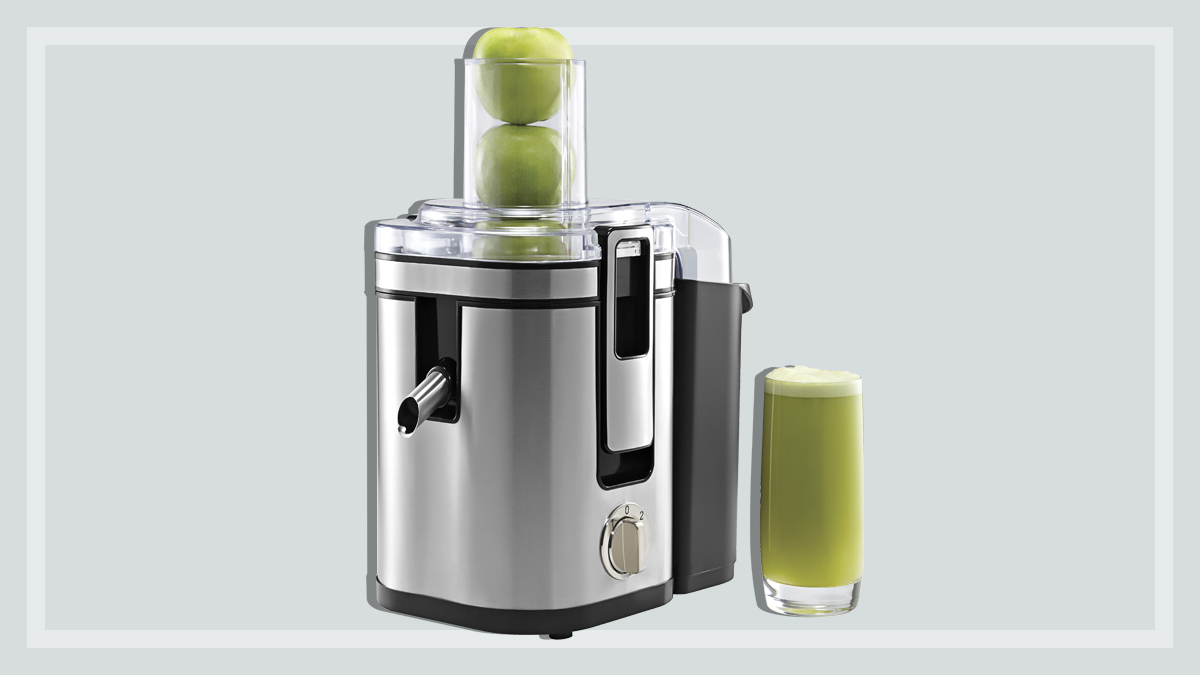Get our independent lab tests, expert reviews and honest advice.
Is it worth buying a juicer?

Need to know
- We calculate that making your own fresh juice at home can be substantially cheaper than buying it from a café or juice bar
- As well as cost and convenience, environmental impact and nutrition are other factors to consider
- CHOICE reviews juicers at a range of price points to help you decide which one may be best for you
There’s something deliciously virtuous about enjoying a freshly made juice. But if you’re in the habit of buying one regularly, you may be wondering if you can save some cash by investing in a juicer and embracing the DIY squeeze.
Of course, the convenience of a fruit-and-veg-filled treat from a local café or juice bar is often hard to beat, especially when enticing blends plumped up with extras promise to cure hangovers, boost immunity or alleviate daily fatigue.
Eliminating a few costly juices from your week may prove a savvy fiscal decision
The habit might even make up part of your weekly routine or provide a much-needed excuse to step away from your desk.
And supporting neighbourhood business is great for those times you feel like slurping a freshly pulverised carrot, but eliminating a few costly juices from your week may prove a savvy fiscal decision.
We look at the cost of a weekly juice habit compared with buying a popular juicer – and nut out which is worthy of your dollar.
Know your juicer
First, let’s consider the juicer. Not all are created equal and neither do they perform the same task in precisely the same way. There are essentially two types of mechanised juicers on the market today – the more common fast juicer, and the slow juicer.
Juicing: Fast or slow?
Slow juicers are sometimes called ‘cold-pressed’ juicers and use single or twin gears to gently crush the fruit.
While they can be more complicated to clean and usually cost more, they’re excellent for taking on leafy greens and they do extract slightly more juice.
But you’re looking at about 4–5 minutes to process a kilogram of fruit, compared with less than a minute for fast juicers.
CHOICE experts have found insufficient evidence that either type of juicer creates more nutritious juice than the other
Fast juicers are generally more popular due to their lower price and ease of use. They use centrifugal force to push fruit and vegetables onto blades to pulverise them quickly, which results in a frothier juice.
Often they have parts that can be popped into the dishwasher for cleaning, but they’re noisy and don’t handle leafy greens as well.
Despite some claims from manufacturers, CHOICE experts have found insufficient evidence that either type of juicer creates more nutritious juice than the other, or that one type heats the juice more or less.
Be sure to check out our expert juicer reviews before making your selection.
Cost of a juicer
How much a juicer costs can vary wildly. Our expert team has tested juicers ranging from almost $900 for a slow juicer down to $60 for a budget fast juicer. The team’s rigorous evaluation takes into account a juicer’s yield, reliability and ease of use, as well as its ability to handle a variety of fruits and veg.
As is often the case, our testers found that price doesn’t necessarily match an appliance’s quality, performance or durability, so before you settle on a machine, check out our juicer reviews.
Cost of a store-bought juice
Freshly made juices bought from café can cost anything from $5 to $10, or even more for an artisan concoction. Many people choose a juice with more than one ingredient and perhaps some extra throw-ins, such as whey powder.
But to keep things simple, we’ll base our cost comparison on good old carrot juice. Our example uses average prices to compare the cost of a juice-bar product with the cost of carrots and the juicer for home juicing.
Do the maths
Our calculations show that making your own fresh juice at home can be significantly cheaper than buying it from a fresh juice bar.
We’ve compared the costs of a moderate habit of 3 x 450ml (medium-sized) carrot juices a week, bought from a popular national juice bar, with the cost of buying your own carrots and juicing at home three times a week.
Making your own juice at home could cost less than a third of the price of buying fresh juices from a café or juice bar
The upshot? Making your own juice at home could cost less than a third of the price of buying fresh juices from a café or juice bar.
Home vs cafe: Cost per 100ml
- 63c per 100ml for a home-squeezed carrot juice (based on the average cost of carrots from a major supermarket and including a weekly cost to cover the price of the juicer)
- $1.67 per 100ml for a freshly squeezed store-bought juice.
Of course, when you’re juicing at home or buying a concoction from a café, you may opt for more than one fruit or vegetable, or a combination of multiple ingredients, which would all affect the cost.
If you stick to seasonal ingredients and limit wasted produce, we believe that juicing at home is still likely to be the cheaper option.
Will a juicer save you money?
Store-bought juice from bar versus making your own carrot juice at home.
3 x 450ml $7.50 carrot juices per week versus Breville The Juice Fountain Max BJE410 ($269), calculated at 65c per week over its 8-year lifespan, plus 3kg carrots at $2.60/kg (1kg yields approx 500ml juice) per week.
Store-bought juice from bar = $1170 per year.
Making your own carrot juice at home = $439 per year.
Cost of waste
The money speaks for itself when it comes to home juicing. But there are other factors to consider when deciding to juice or not to juice, such as the potential costs to the environment.
For example, unless your bringing your own cup, buying three juices a week requires 156 plastic or plastic-lined cups, some of which may not be recyclable.
Is your juice bar eco-aware?
“Consumers can think consciously about what juice bars they are buying from – do they use biodegradable packaging, do they source fruits and vegetables from environmentally conscious orchards and farms? Do these companies consider their environmental footprint?” says CHOICE home economist Fiona Mair.
Opting for an eco-aware juice bar and taking your own cup may help to mitigate some of these downsides.
A juicer won’t last forever
On the other hand, Fiona says a juicer’s lifespan is probably in the range of five to eight years, potentially more if it’s well maintained. This means it, too, is destined for landfill.
According to Fiona, you should consider the energy it uses and its manufacture before buying. You should also look after your machine to ensure it reaches maximum longevity.
Clean your juicer as soon as possible after juicing and dry it well
Fiona Mair, CHOICE expert and home economist
“Don’t put parts in the dishwasher, even though manufacturers state they can go in,” she says. “The parts will stay strong and be less likely to crack over time.”
Fiona also advises you clean your juicer as soon as possible after juicing and dry it well.
Try to replace the parts
Although motor burnouts usually spell the end of an appliance, some more expensive juicers are worth the cost of replacing loose parts, such as blades and jugs.
Possibilities of pulp
Making your own juice also means you have control over what happens to the byproduct – pulp.
At home, you can be sure this is responsibly turned into compost rather than discarded in general rubbish. Alternatively, Fiona suggests using the pulp in your cooking, such as carrot pulp for carrot cake or other vegetable pulp for fritters.
The convenience factor
Of course, there are times when the desire for a fresh juice strikes while you’re out – not home with your juicer.
If you’re not the type to make a juice in advance to take with you, then the convenience of a store-bought thirst quencher is always appealing. There’s also the simple but undeniable luxury of having someone else make it for you.
To get the most out of a juicer, you need to be using it every day
Fiona Mair, CHOICE home economist
But there’s a big upside to having a juicer at home, especially if your juice intake follows a predictable routine, such as for breakfast, after a workout, or as an after-school snack.
“To get the most out of a juicer, you need to be using it every day,” says Mair. She suggests storing it on the benchtop in your kitchen where you have easy access to it.
Get creative with flavour and nutrition
Enjoying a specialty juice can serve as a little indulgence and is certainly one of the healthier ways to treat yourself.
If you’re buying just a few juices a week, you’re probably better off avoiding yet another appliance cluttering your kitchen. But for those who love to dabble with flavour and create wholesome and delicious fare, a juicer can be invaluable and lots of fun.
Try different combinations, add nuts and powders, and sneak a few vegetables into the kids’ diet by disguising them as fruit juice.
You can also use your juicer to make ice blocks in summer, or even fruity cocktails.
Juicing with the seasons
When you juice at home, you can be sure you’re enjoying the freshest, most nutrient-dense fruit and vegetables by choosing what’s in season and organic.
This isn’t simply a frugal benefit but a flavourful one, too, as you can buy what’s ripe and on special – not what’s on a year-round menu board.
The final squeeze
Ultimately, making your own fresh juice at home is the most cost-effective option for the regular juice drinker.
But if you’re not likely to be bothered using the machine, have fewer than three juices a week, or simply enjoy the ritual of buying a juice that’s been made for you by someone else, it’s probably best to stick with the juice bar. Just choose one with good environmental credentials to make sure you’re not contributing to waste.






